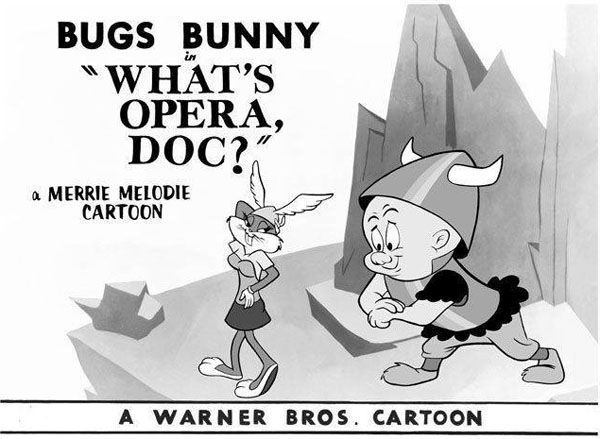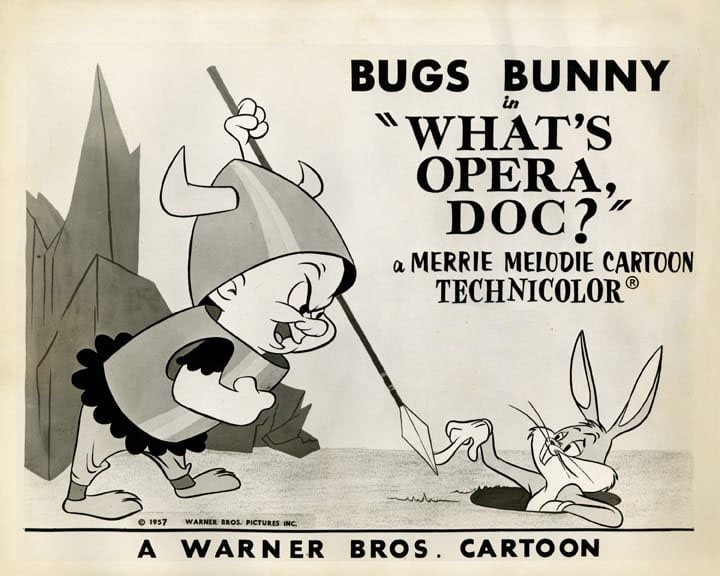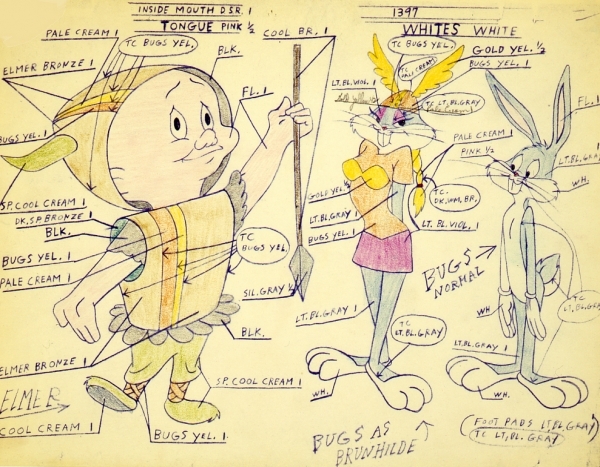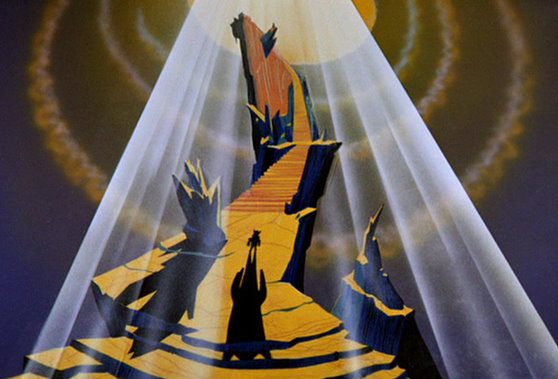
 A meme is circulating asking, “So, how did you get into classical music?” There’s an answer underneath, “Me, an intellectual-“…followed by an image from the 1957 cartoon short, What’s Opera, Doc?
A meme is circulating asking, “So, how did you get into classical music?” There’s an answer underneath, “Me, an intellectual-“…followed by an image from the 1957 cartoon short, What’s Opera, Doc?
For generations, this is how many learned about the world of classical music—recognizing strains of the world’s greatest songs years later in grammar school music class, as visions of Bugs Bunny and Elmer Fudd pranced through our minds.
What’s Opera, Doc? has been not just a gateway into the realm of beautiful music but the endless possibilities that animation can provide.
No wonder many animation historians awarded this cartoon short the top spot in Jerry Beck’s 1994 book, The 50 Greatest Cartoons: As Selected by 1,000 Animation Professionals.
 What’s Opera Doc? is all the limitless possibilities and magic that animation provides in one cartoon.
What’s Opera Doc? is all the limitless possibilities and magic that animation provides in one cartoon.
The short takes the classic – now almost cliché – plot of Elmer hunting Bugs and lays it over the serious setting of a Wagnerian opera. Writer Michael Maltese did this gag first in Friz Freleng’s Herr Meets Hare (1945), but with Jones encouragement expands it here to a full seven minutes. Opening with a pretty direct parody of Fantasia’s “Night on Bald Mountain,” as a thunderstorm reveals hulking shadows of a horned figure against a mountainside are shown to be Elmer, dressed in the garb of a mighty Viking, the demigod Seigfried.
He sings of taking his spear to “Kill the wabbit! Kill the wabbit!” This causes Bugs Bunny to surface and sing, “O mighty warrior of great fighting stock, might I inquire to ask…Eh, What’s Up. Doc?”
Elmer threatens to unleash the power of his magic helmet, and when Bugs sees the ferocity of this, he does what he has done in many shorts: disguises himself in drag. This time, as the beautiful Valkyrie Brunnhilde, riding a horse.
 Elmer falls in love (“Oh, Bwunnhiwda, you’re so wuvwee!”), but soon, Bugs’ disguise is discovered, and Elmer is back to wanting to “Kill the wabbit!” He uses his power to create a storm and tear the mountains apart, bringing Bugs’ demise. Bugs’ lifeless body lies in the spotlight as rain drops fall on his body.
Elmer falls in love (“Oh, Bwunnhiwda, you’re so wuvwee!”), but soon, Bugs’ disguise is discovered, and Elmer is back to wanting to “Kill the wabbit!” He uses his power to create a storm and tear the mountains apart, bringing Bugs’ demise. Bugs’ lifeless body lies in the spotlight as rain drops fall on his body.
As a remorseful Elmer carries Bugs/ Brunnhilde’s lifeless body off, Bugs’ head pops up; he looks at the camera and asks, “Well, what did you expect in an opera? A happy ending?”
With lines like that, coupled with the stunning images in What’s Opera Doc? the short is both a celebration and a parody of all that’s beautiful about animation.
In addition to the customary comedy we would expect from a Bugs and Elmer cartoon, What’s Opera Doc? is simply beautiful to watch. The lush, full animation adds to this, such as Brunnhilde’s horse, an absolute marvel of hysterical character design. The way that the mammoth equine gallops down the mountainside are just one example of the lithe movements found in this short.
Coupled with this is a stunning layout by Maurice Noble and backgrounds by Phillip DeGuard, that combine modern and classic sensibilities.
At the helm for all this is the genius Chuck Jones, who seems the only person who could have directed What’s Opera, Doc? An intellectual with an innate sense of comic timing, who was responsible for many of Warner Bros’ best-loved cartoons, What’s Opera, Doc? stands as his magnum opus.
Celebrating its 65th anniversary last July, What’s Opera, Doc? has secured an unparalleled legacy in animation history.
Before it was honored with the top spot among The 50 Greatest Cartoons, What’s Opera Doc? was selected for preservation in the National Film Registry in 1992. And in the six and a half decades since its release, the cartoon short’s appreciation society has only grown, and its inspiration is still felt by so many.
In Jerry Beck’s book, The 50 Greatest Cartoons, contributor Steve Schneider comments: “The greatest cartoon of all time? The point remains debatable. Nevertheless, Chuck Jones’s splendiferous What’s Opera Doc? has emerged as the clear, sentimental favorite of the largest assemblage of animation fans, practitioners, critics, and general cartooniacs ever polled. The fact that this fabled film is a work of stunning beauty, great humor, and masterly execution only serves to make the choice seem eminently reasonable.”

